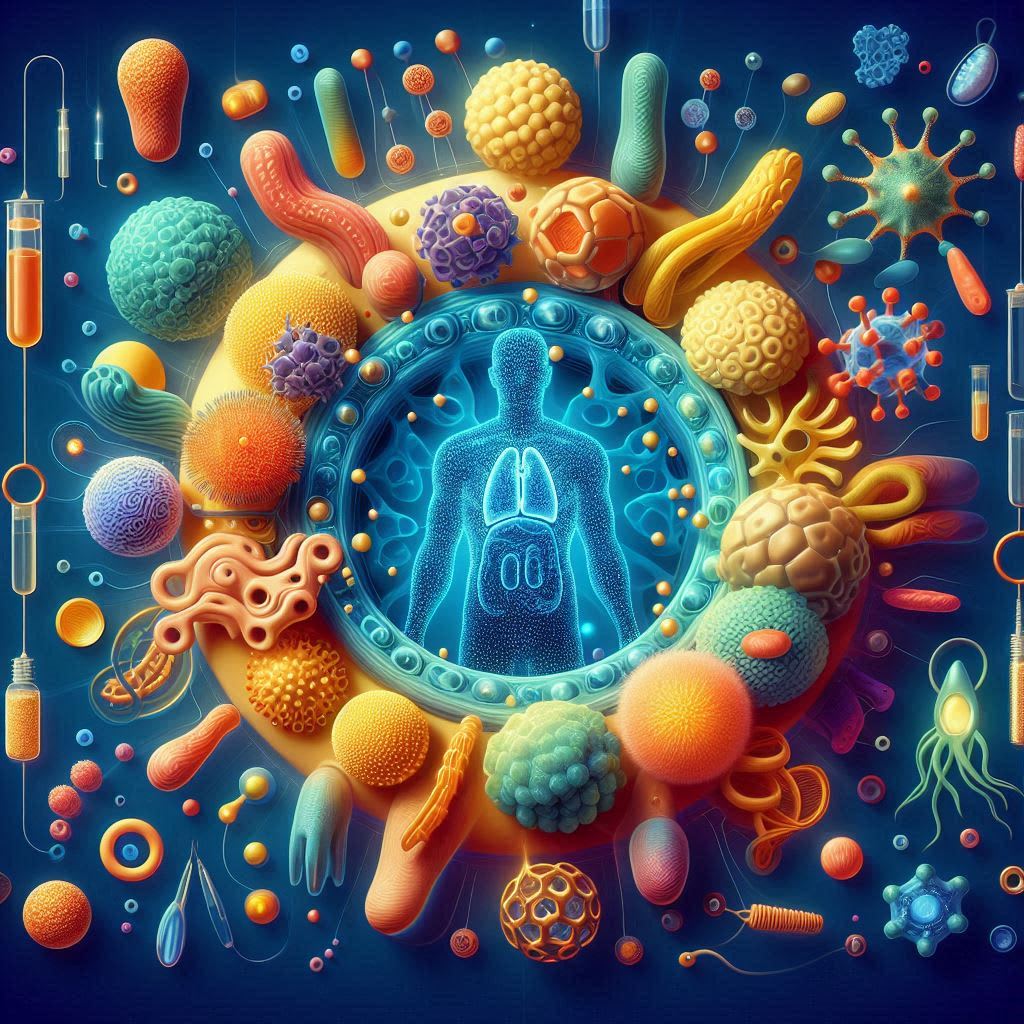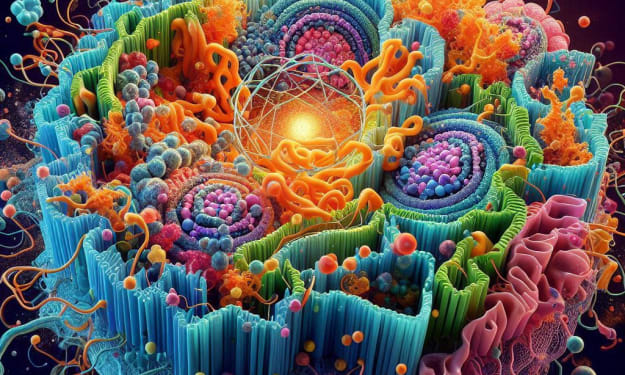The Spice of Life: Enzymes Behind Flavorful Delights
The Future is Enzymatic: Exploring New Frontiers in Science and Health

The Mighty Minis of Life: Unveiling the Secrets of Enzymes
Imagine a tiny factory worker, zipping around a microscopic assembly line, speeding up the production of essential components. These are enzymes, the unsung heroes of our bodies, constantly working to keep us alive and functioning. But enzymes are far more fascinating than just cellular factory workers. Let's delve into their intricate world and explore why they matter, how they work, and their surprising connection to everything from delicious foods to potentially lifesaving drugs.
Why Enzymes Matter: The Masters of Speed
Have you ever wondered why you can digest a slice of pizza but a log of wood sits in your stomach undigested? The answer lies in enzymes. These biological catalysts act like molecular matchmakers, bringing together specific molecules (substrates) and accelerating the chemical reactions that break them down or build new ones. Without enzymes, these reactions would occur at an agonizingly slow pace, incompatible with life. Enzymes act as shortcuts, lowering the activation energy, the initial hurdle a reaction needs to overcome to proceed. This allows vital processes like digestion, energy production, and muscle movement to happen efficiently within our bodies.
How Enzymes Work: The Lock and Key, or Maybe a Flexible Fit?
Enzymes are typically proteins with a complex three-dimensional structure. Within this structure lies a special cavity called the active site, perfectly shaped to bind a specific substrate like a key fitting into a lock. This is the traditional "lock-and-key" model of enzyme-substrate interaction. However, a more recent theory suggests an "induced-fit" model. Here, the active site is flexible and slightly changes shape upon substrate binding, creating an even more optimal fit. This adaptability allows enzymes to handle a wider range of substrates with high efficiency.
Optimum Conditions: Keeping the Minis Happy
Like any good worker, enzymes have ideal working conditions. They function best at a specific temperature and pH range. Deviations from these ranges can disrupt the enzyme's structure, affecting its ability to bind the substrate and perform its job. Imagine a baker struggling to knead dough in scorching heat; that's what happens to enzymes outside their optimal environment.
Beyond Basics: Unveiling the Nuances of Enzyme Kinetics
The study of enzyme kinetics explores the intricate dance between enzymes, substrates, and reaction rates. It helps us understand how different factors, like substrate concentration, influence how quickly an enzyme works. The Michaelis-Menten model, a cornerstone of enzyme kinetics, describes this relationship. It introduces the concept of Km, the Michaelis constant, which reflects the enzyme's affinity for its substrate. A lower Km signifies a tighter binding and a more efficient enzyme.
The Medical Marvels: Enzymes as Diagnostic Tools and Therapeutic Hope
Plasma enzyme assays measure enzyme activity in the blood. Abnormal enzyme levels can indicate tissue damage or specific diseases. For example, elevated levels of certain enzymes might signal a heart attack or liver problems. This makes enzymes valuable diagnostic tools.
The future of enzyme research is brimming with possibilities. Scientists are exploring the potential of enzyme replacement therapy for diseases caused by enzyme deficiencies. Additionally, researchers are engineering enzymes with novel functions, aiming to create new drugs or even develop eco-friendly industrial processes.
Enzymes: The Microscopic Powerhouses Within Us
Enzymes are not just the silent workhorses of our cells; they are the very foundation of life. From the moment we take a bite of food to the intricate muscle contractions that allow us to move, enzymes are orchestrating a symphony of chemical reactions. Understanding these tiny marvels deepens our appreciation for the intricate machinery of life and opens doors to exciting advancements in medicine and beyond. As research continues to unveil the secrets of enzymes, we can expect even more fascinating discoveries about these powerful biological catalysts.
The Spice of Life: Enzymes Behind Flavorful Delights
Enzymes aren't just confined to our internal world; they play a surprising role in the culinary delights we savor. Have you ever wondered why ripe fruits taste so much sweeter than their unripe counterparts? The answer lies in enzymes like amylase, which break down complex carbohydrates like starch into simpler sugars. This process of enzymatic breakdown continues even after harvest, making fruits sweeter as they ripen.
Similarly, the tangy flavor of yogurt comes courtesy of the enzyme lactase. Lactase helps break down lactose, the sugar naturally found in milk, into simpler sugars that are easier for our bodies to absorb. This is why people who are lactose intolerant, lacking sufficient lactase, experience digestive discomfort after consuming dairy products.
Beyond Digestion: Enzymes in Unexpected Places
The influence of enzymes extends far beyond our kitchens. The process of fermentation, which underpins the creation of bread, beer, and wine, relies heavily on enzymes. Yeast, a single-celled organism, contains enzymes like zymase that convert sugars into alcohol and carbon dioxide, causing the dough to rise and alcoholic beverages to ferment.
Enzymes are also nature's clever way to clean up messes. Certain bacteria produce enzymes capable of breaking down pollutants like oil spills or organic waste products. These bioremediation techniques offer an eco-friendly solution to environmental challenges.
The Intricate Dance: Enzymes and Other Biological Molecules
Enzymes don't operate in isolation. They often work in concert with other biological molecules called cofactors. Cofactors, like vitamins and minerals, can be inorganic elements or organic molecules. They act as essential partners, assisting enzymes in their catalytic activity. For instance, the enzyme succinate dehydrogenase, crucial for energy production in our cells, requires a specific vitamin K-derived cofactor to function effectively.
The Intricacies of Regulation: Fine-Tuning Enzyme Activity
The human body is a complex system, and enzyme activity needs to be tightly regulated to maintain cellular harmony. Several mechanisms control enzyme activity, ensuring the right enzymes are working at the appropriate levels at the right time. One way this is achieved is through feedback inhibition. Imagine a factory with a supervisor monitoring production. In this analogy, the end product of an enzymatic pathway acts as the supervisor. When sufficient product is produced, it binds to the enzyme, slowing down its activity to prevent overproduction. This feedback loop helps maintain a cellular balance.
The Future of Enzymes: A World of Potential
The scientific community is actively exploring the vast potential of enzymes. One exciting area is enzyme replacement therapy. In certain genetic disorders, mutations can lead to the production of faulty or non-functional enzymes. Scientists are developing strategies to introduce healthy copies of these enzymes into patients' cells, potentially treating the underlying condition.
Another promising avenue is the development of enzyme inhibitors. These molecules can specifically target and block the activity of enzymes involved in disease processes. For instance, some medications for high blood pressure work by inhibiting enzymes that regulate blood vessel constriction.
Conclusion: A Deeper Appreciation for the Microscopic Marvels
Enzymes are not merely the cogs in the cellular machinery; they are the very essence of life's remarkable efficiency. From the digestion of food to the intricate processes that govern our thoughts and movements, enzymes are the silent conductors of a grand biochemical orchestra. As we delve deeper into their fascinating world, we unlock doors to innovative solutions in medicine, environmental remediation, and even the creation of novel food products. By appreciating the power of these microscopic marvels, we gain a profounder understanding of ourselves and the intricate dance of life that unfolds within us.
About the Creator
suren arju
Hi there! I'm Suren, your startup guide. Entrepreneur, writer, dreamer - I share insights, tips & stories to fuel your startup journey. Ready to explore, learn & win together? Join me & let's redefine how we launch, learn & leap!
Enjoyed the story? Support the Creator.
Subscribe for free to receive all their stories in your feed. You could also pledge your support or give them a one-off tip, letting them know you appreciate their work.





Comments
There are no comments for this story
Be the first to respond and start the conversation.